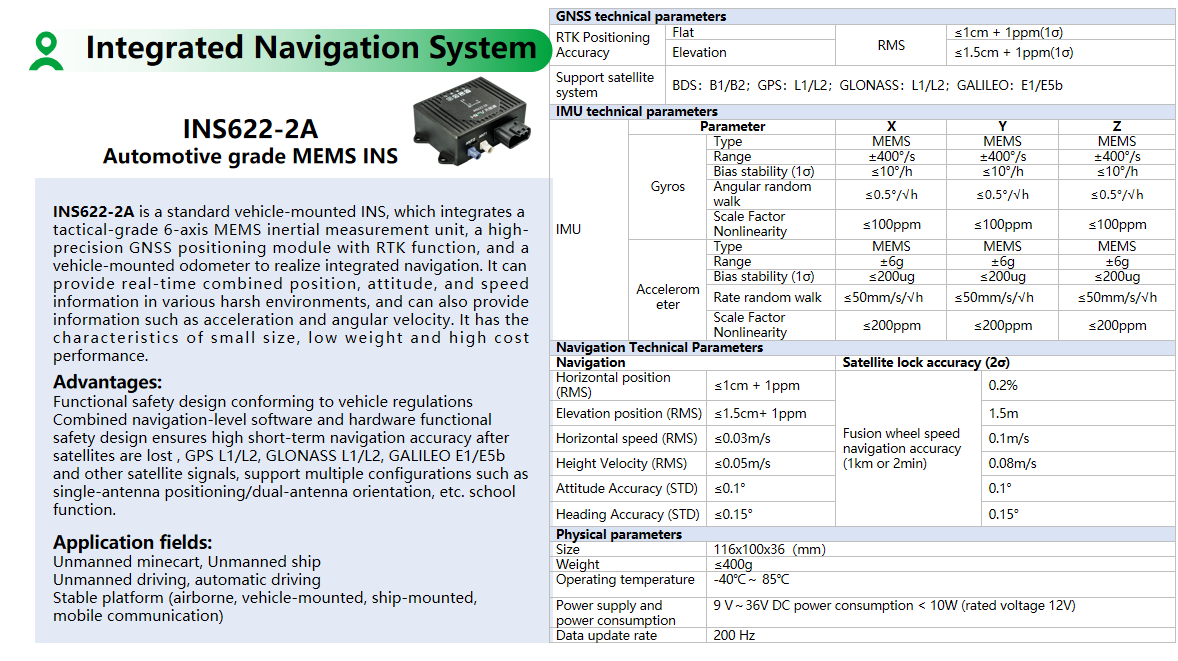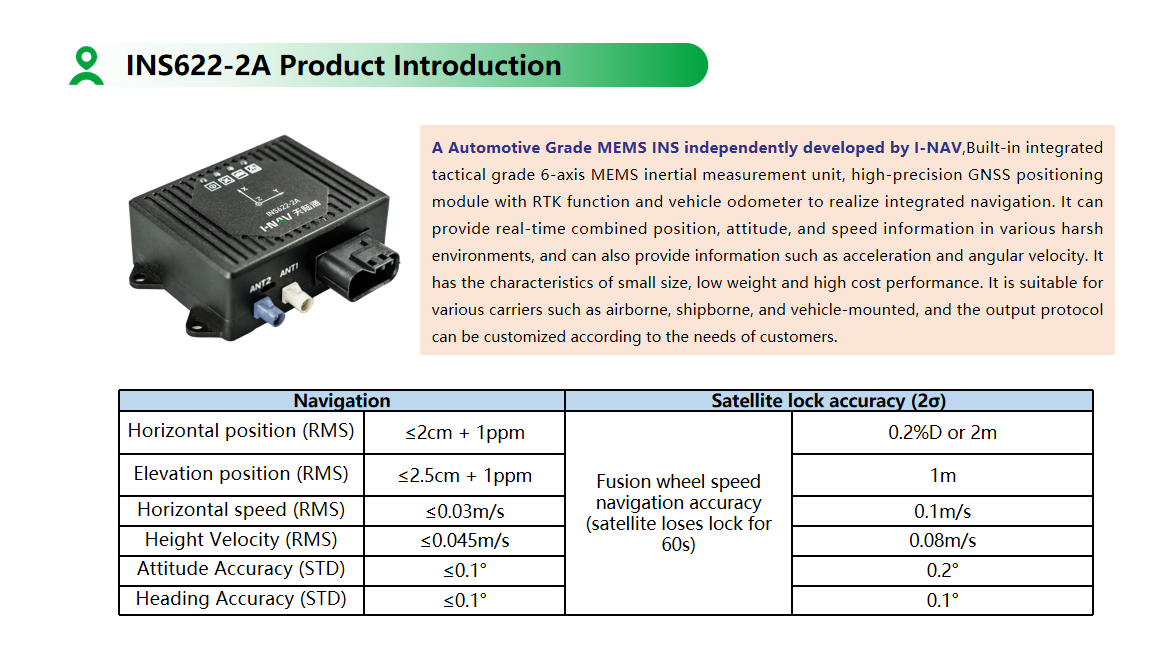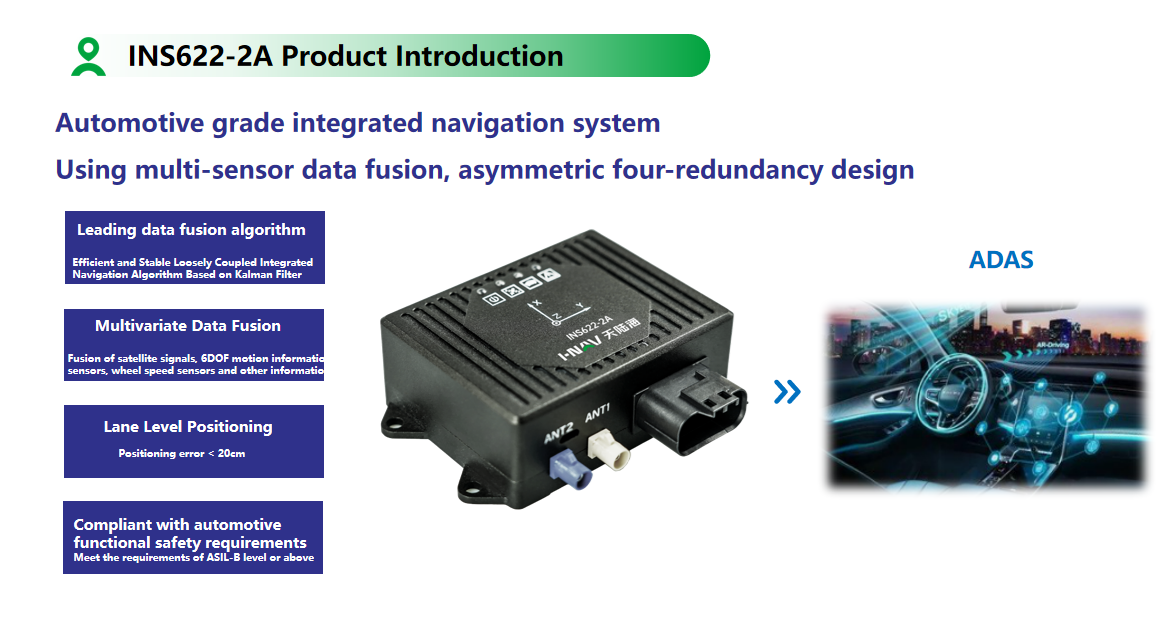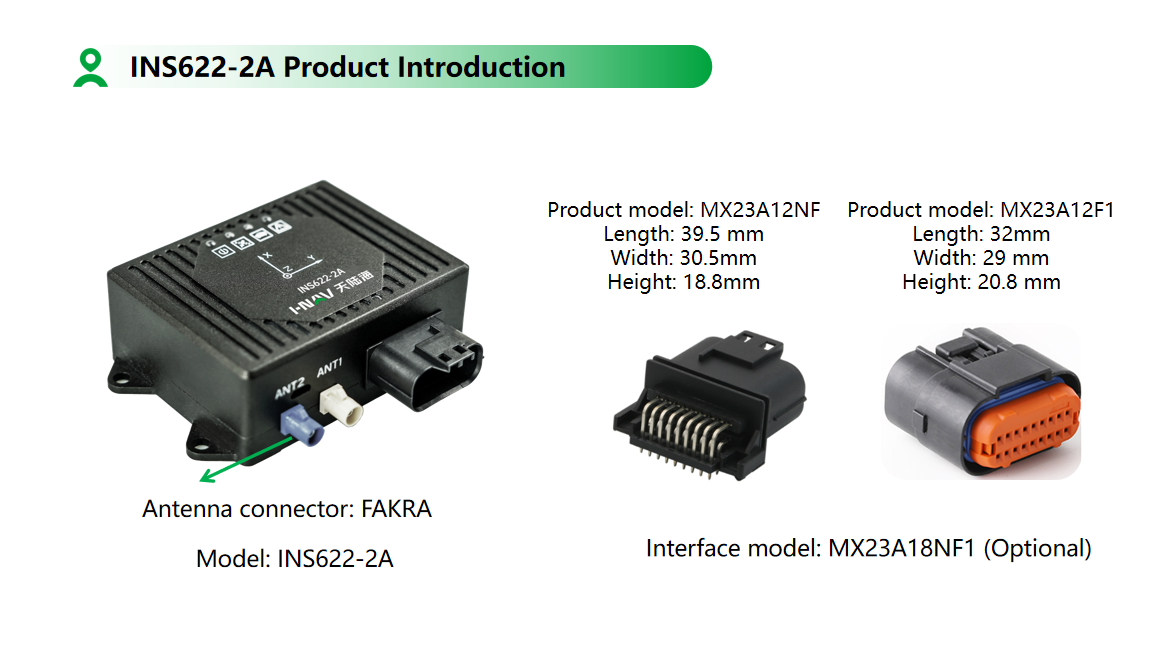


1. Low-Speed Self-Driving Inertial Navigation Applications
L2 (Level 2) self-driving car technology refers to partial automation of the driving task, where the vehicle can control acceleration, braking, and steering, but still requires a human driver to monitor the environment and take control if necessary. Inertial navigation systems (INS) can be used in combination with L2 self-driving technology to improve the accuracy and reliability of the vehicle's navigation.
The integration of INS with L2 self-driving technology can provide several benefits, including:
1. Improved accuracy: INS technology can provide highly accurate measurements of the vehicle's position, velocity, and orientation, which can be used to enhance the accuracy of the vehicle's navigation system.
2. Robustness: INS technology does not rely on external sensors such as GPS, which can be affected by environmental factors or signal loss. This makes the vehicle more robust and able to navigate in a wider range of environments.
3. Redundancy: By combining INS with other sensors, such as cameras and lidar, the vehicle's navigation system can have redundancy and still operate in the event of a failure of one or more sensors.
Some examples of L2 self-driving car inertial navigation applications include:
1. Lane-keeping assistance: INS technology can be used to accurately measure the vehicle's position within a lane, and provide feedback to the driver or the vehicle's control system to keep the vehicle within the lane.
2. Adaptive cruise control: INS technology can be used to measure the vehicle's velocity, which can be used to adjust the vehicle's speed in response to changing traffic conditions.
3. Automatic emergency braking: INS technology can be used to detect sudden changes in the vehicle's velocity or orientation, and trigger the automatic emergency braking system to prevent accidents.
Overall, the integration of INS with L2 self-driving technology has the potential to improve the accuracy, reliability, and safety of autonomous vehicles. As the technology continues to develop, it is likely that we will see further applications of INS in self-driving cars at higher levels of automation.
2.Product Introduction



